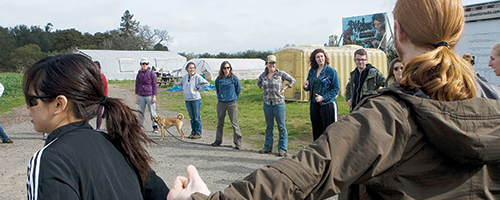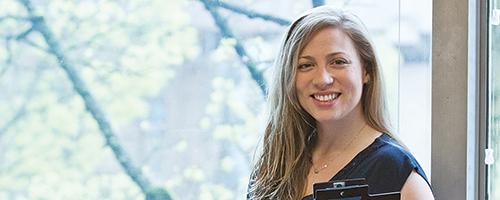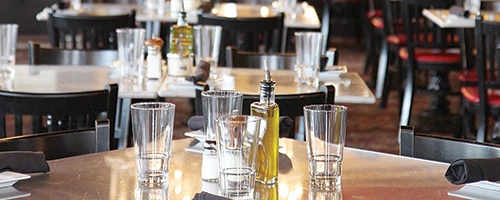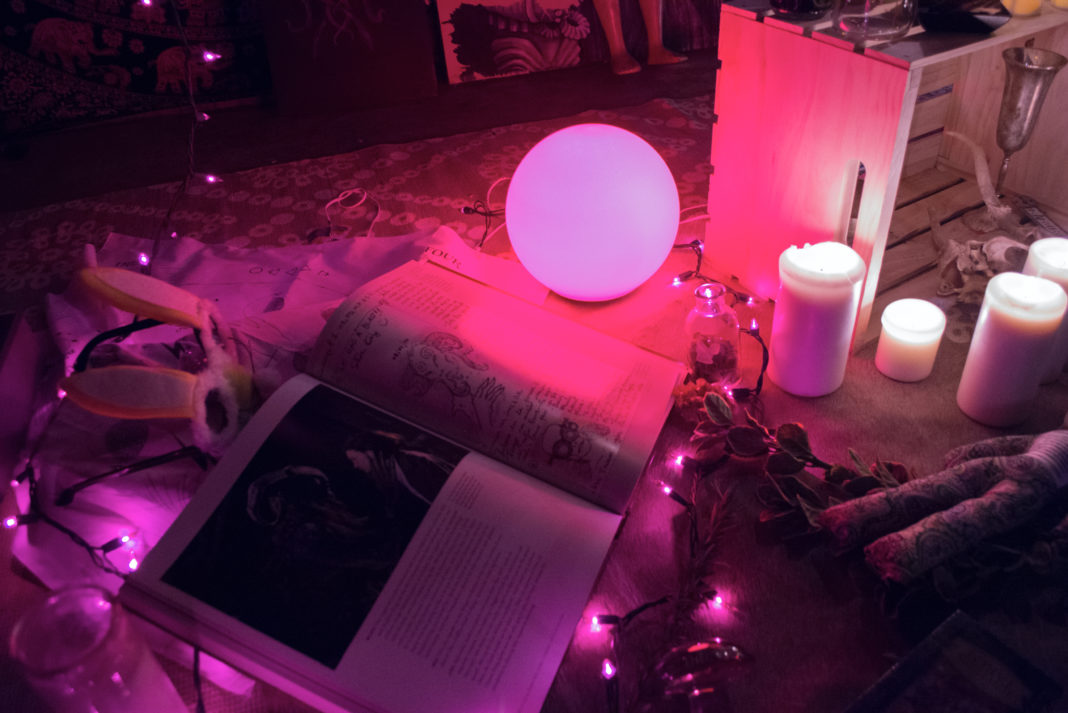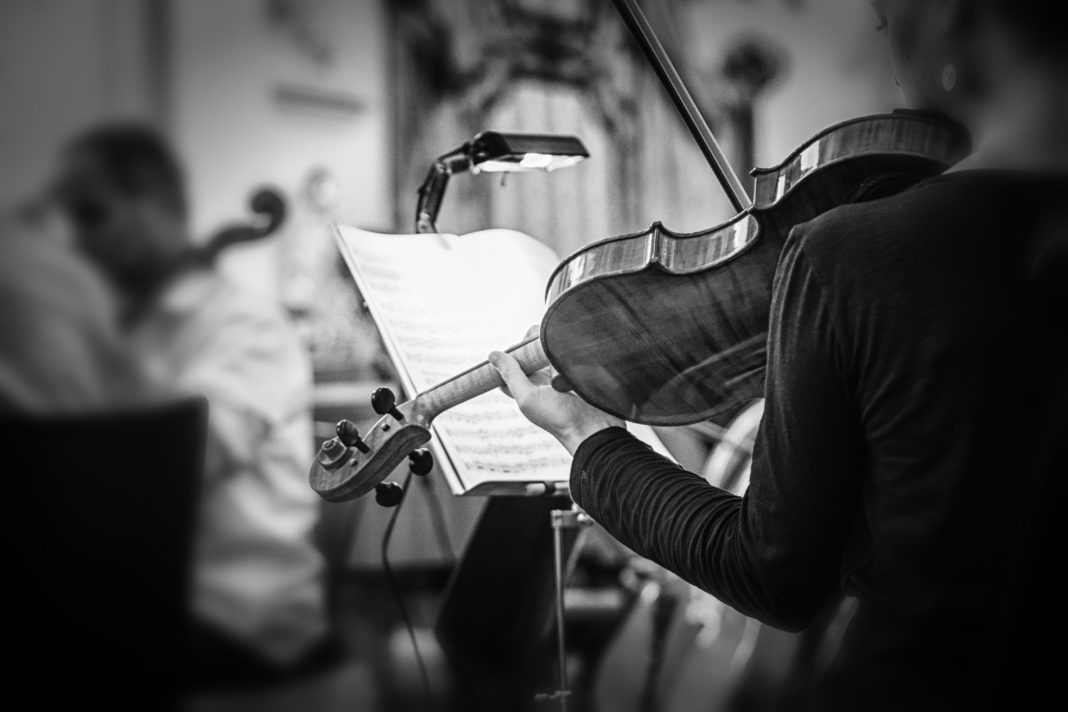One group learned about sustainable farming. Another learned how to build houses. Back from their alternative spring breaks, a group of PSU students shared how, by the end of their trips, they felt they got more in return than they gave.
Students farm, build homes, restore wetlands
[portfolio_slideshow id=48558]
One group learned about sustainable farming. Another learned how to build houses.
Back from their alternative spring breaks, a group of PSU students shared how, by the end of their trips, they felt they got more in return than they gave.
Three groups of students spent their breaks outside of Portland, volunteering through a program organized by Student Leaders for Service. After a year of careful planning, they traveled to Eastern Oregon, Northern California and Houston, Texas, from March 24–30, to learn and give their time.
“The actual service was amazing,” said Erika Nielsen, who led a group of students to Houston to build new homes through Habitat for Humanity. “I have been in a lot of service or volunteer programs, and this was by far the best.”
The group spent the first two days tearing down homes and the next two days learning how to construct a home from the ground up. Nielsen and the other PSU students learned how to use power tools and install cabinets.
On their day off, Nielsen said students spent time in Houston’s downtown and the museum district.
Anther group of students, led by Grant Neely, headed east of Portland to several destinations. They learned about culture and history at the Umatilla Indian Reservation and spent time learning about habitat restoration at wetlands.
Next, in Union, Ore., the same group of students broke ground and removed rocks from the soil to prepare for a garden. After spending one more day in Terrebonne, Ore., getting a tour of a farm and raising garden beds, the group spent their free day exploring Bend.
The third group headed south to Northern California to learn about sustainable food practices. Most days were spent on farms such as the Petaluma Bounty Farm, the Soil Born Farm and First Rain Farm, said Devin Burgoyne, a trip leader. Students took educational tours and learned practical skills such as “lasagna” composting—a no-dig and no-till organic gardening method of creating rich soil by layering organic materials. Students also planted fig trees and practiced mulching.
That group spent another day in San Francisco preparing food and packaging rice at a food bank. That same day, the group volunteered as servers at a friendship banquet for HIV-positive residents.
“We set tables, were engaged and served,” said Oran Stainbrook, another leader of the Northern California group. “It was fun to just talk and connect with them and make friends.”
While all the trip leaders agreed that the volunteer work was deeply informational, they also felt that some of the best moments and lessons came from the bonding within their own groups.
Nielsen said some of her favorite moments were the last few hours the group spent together each night before bed.
“We were always very tired, so people were very authentic in these hours—lots of laughing,” Nielsen said.
Stainbrook agreed, adding that he felt a great camaraderie among students playing games, staying up and having long conversations before bed.
“One night we stayed up late writing poetry together,” Stainbrook said. He described a game in which a new person writes each separate line of poetry without seeing the previous lines to eventually compose a complete poem written cooperatively.
“This was so cool because nobody could see what anyone else was writing, but somehow all the lines made sense,” Stainbrook said. “We had connected and were reflecting the sights and sounds of the trip.”
Other great moments were spurred by strangers. During one home-cooked meal at a farm in Eastern Oregon, Neely recalled a 10-year-old boy who spent dinner with his group.
After listening to the group of students talk about sustainability and food, the boy interrupted them to tell them that he was inspired by their volunteer work and saw them as an example.
“I couldn’t believe it. I almost lost it,” Neely said. “Because we got through to even just one kid, it made the whole thing worth it.”
Nielsen was touched by the random acts of kindness bestowed upon her group as well. After learning of the group’s work with Habitat for Humanity, an exhibit guard at a museum granted several students free admission into an exhibit, while another student had her airplane digital media player purchased for her by a neighboring passenger, Nielsen said.
“To us, the work we were doing didn’t feel like a big deal,” she said. “But to others it was.”
Next year, Neely hopes to build on connections and relationships he formed this year with the partners in Eastern Oregon.
Stainbrook said he would like to expand the themes, especially for the Northern California group. Inspired by the service in San Francisco, Stainbrook hopes that in the years to come students can focus not only on sustainable agriculture, but expand into sustainable food systems. “Sustainable food systems equally concern themselves with equity and economics,” he said.
To see more photos from the alternative spring break trips, visit portlandstatealternativebreaks.tumblr.com.

